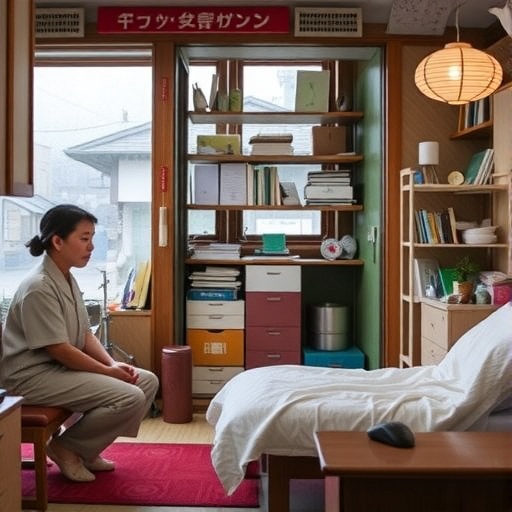
The Intersection of Indoor Air Quality, Climate Change, and Public Health
In a groundbreaking project funded by the Environmental Protection Agency (EPA) and the Arlington County government, a research team from George Mason University is delving into the critical relationships among indoor air quality, climate change, and public health. This initiative, led by a multidisciplinary group of experts in atmospheric sciences, civil engineering, public health, and communication, aims to unveil the multifaceted impacts of indoor air environments on the well-being of residents in Arlington County.
Indoor air quality (IAQ) has emerged as a significant public health concern as urban living continues to evolve amidst climate change. With rising temperatures and increasing pollution, understanding how these factors interact within residential spaces has never been more vital. This research initiative seeks to assess how indoor pollutants, heat exposure, and building characteristics converge to influence health outcomes in the community.
Arlington County serves as an ideal microcosm for this study due to its diverse housing stock and variable environmental conditions. The research team, comprised of Assistant Professors Luis Ortiz and Lucas RF Henneman, along with renowned experts such as Jenna Krall and Edward Maibach, brings a wealth of knowledge spanning various disciplines. Their collective expertise will allow them to explore how different residential environments perform under various climate scenarios while influencing health equity.
Central to the project is the exploration of how architectural and infrastructural variables can impact indoor air quality. The researchers will evaluate the state of scientific literature to understand how pollutants and temperature variations specifically affect human health indicators. By establishing a clearer understanding of these relationships, the project aims to inform better building practices that prioritize health and sustainability.
One of the innovative approaches proposed by the team involves simulation-based case studies. These simulations will assess how modifications to building designs can minimize indoor pollutants and heat exposure, creating healthier living environments. The project will not only quantify the existing risks but also provide actionable strategies for mitigating these risks through informed construction and renovation practices.
Additionally, a critical component of the research focuses on health equity. By analyzing the relationship between indoor air quality and social equity, the team seeks to ensure that interventions do not disproportionately benefit certain groups over others. A comprehensive understanding of these dynamics is essential to foster a fair approach to public health, particularly in the face of climate change, which tends to exacerbate existing inequalities.
As the researchers embark on this ambitious journey, they will also engage with Arlington County’s local community and community-based organizations. Through this collaboration, the team will gather insights directly from residents about their indoor environmental experiences. Engaging with the community not only empowers residents to voice their needs but also ensures that the resulting interventions are relevant and effective.
In addition to the technical aspects of their work, the research team will prioritize effective communication tactics to disseminate their findings. The importance of public engagement cannot be understated; by effectively relaying their insights to the community, they hope to enhance awareness regarding the significance of indoor air quality and its direct correlation to health and climate resilience.
Funding for this initiative, amounting to $121,229, underscores the commitment of Arlington County to address pressing public health issues through research innovation. With a funding timeline extending from late 2024 to early 2027, the team has a solid framework to explore these issues comprehensively, with the potential to influence policy and practice for years to come.
This research emerges at a pivotal moment when climate change is reshaping how we understand urban environments. The findings from this project could provide a critical lens through which to view residential health practices, contributing to a broader discourse on how to design urban living spaces that are not only comfortable but also conducive to long-term health and resilience.
As the landscape of indoor living continues to evolve, initiatives like the Arlington County Energy-Health-Equity project are instrumental in framing our understanding of how environmental factors impact human health. With the outcomes poised to inform future legislation, community planning, and health interventions, this project could serve as a blueprint for similar studies around the country.
In conclusion, the research initiative led by George Mason University not only investigates the pressing question of indoor air quality but also frames it within the broader context of climate change and health equity. With a robust team of experts and a commitment to community engagement, the project promises to yield insights that could fortify public health systems and inform sustainable urban development practices.
By bridging the gap between scientific inquiry and real-world application, this research has the potential to transform how communities address the challenges posed by climate change. The project’s outcomes could ultimately empower individuals to take charge of their living environments while advocating for policies that safeguard public health against the backdrop of a warming planet.
Through rigorous investigation and active community involvement, the George Mason University team is taking an important step towards a healthier urban future, setting a precedent for interdisciplinary research that prioritizes both environmental sustainability and human well-being.
Subject of Research: Indoor Air Quality, Climate Change, Public Health
Article Title: The Intersection of Indoor Air Quality, Climate Change, and Public Health
News Publication Date: [not provided]
Web References: [not provided]
References: [not provided]
Image Credits: [not provided]
Keywords: Indoor Air Quality, Climate Change, Public Health, Health Equity, Community Engagement
Tags: Arlington County indoor air qualityatmospheric sciences and engineering collaborationbuilding characteristics and public healthclimate change public health initiativecommunity health and climate changeEPA environmental health projectGeorge Mason University research fundinghealth equity in environmental researchimpacts of indoor pollutantsindoor air environments studymultidisciplinary research teamurban living and health outcomes





